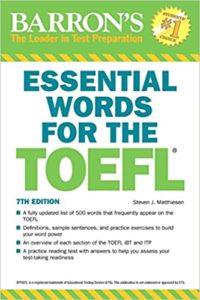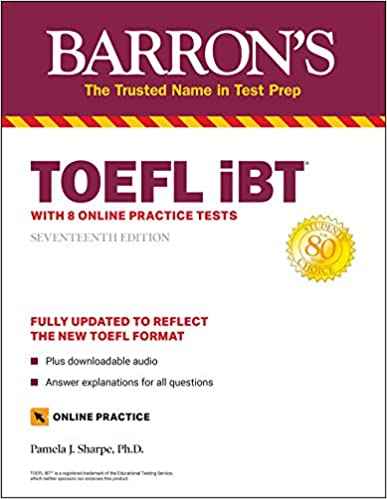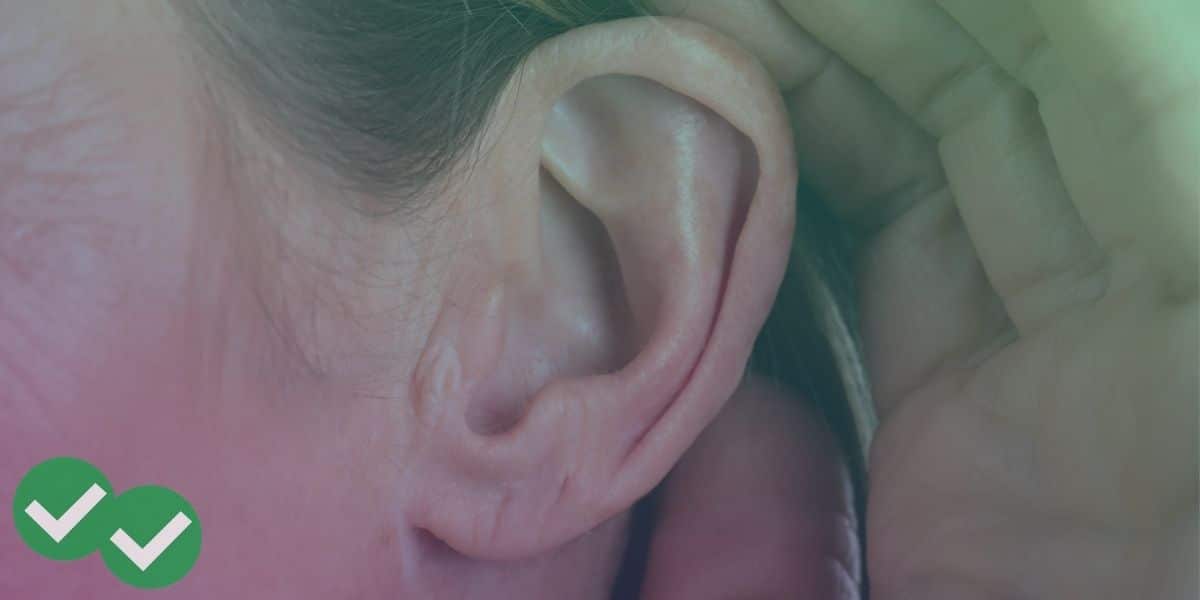
As I’ve mentioned before, Barron’s is one of the best sources for unofficial TOEFL prep. (Besides Magoosh, of course! 😉 ) And Barron’s Essential Words for the TOEFL is yet another great Barron’s book I can happily recommend. Let me give you a closer look at what this book offers.
The Structure of the Book
This is a short book with carefully structured lesson material. The structure I’m going to outline below will tell you everything you need to know about what this book offers. Read on for a guided tour of Barron’s Essential Words for the TOEFL.
Chapters 1-4: Tips and Tricks
Barron’s Essential Words for the TOEFL starts with four short chapters of tips and tricks for building TOEFL Vocabulary.
The first and second chapters describe the exam itself; these chapters do accurately describe the importance of vocabulary on the test, but the descriptions and examples reflect the old format of the TOEFL rather than the new version rolled out in 2019.
In these first two chapters, there is a special emphasis on TOEFL Reading, the section where vocabulary is tested the most rigorously. The second chapter focuses exclusively on the Reading section.
Chapters 3 and 4 are impressive resources for improving and building vocabulary. The tips, tricks, and study supports in these chapters are fantastic! Reading those chapters, I found myself wishing I’d known about this book when I first started teaching the TOEFL. It would have been a great resource for my students.
Chapters 5 and 6: Practice, Practice, Practice
“Chapter” 5 of this book is not so much a chapter as it is a large section. This chapter is over 250 pages long and contains 30 vocabulary lessons. Each individual lesson introduces students to 17 new vocabulary words that are common on the TOEFL. Definitions and example sentences are given for each word, followed by a synonym-matching exercise and a set of TOEFL vocabulary-in-context Reading questions.
Once you’ve learned these 510 words, the book will continue with its emphasis on vocabulary use in TOEFL Reading. In Chapter 6, you’ll go through a full TOEFL Reading section, with three passages and three question sets. This Reading section is patterned after the pre-2019 TOEFL exam, but it really isn’t that different from the current version of the test. Each passage comes with extra questions beyond the 10 questions per passage in the current exam. But the styles of passage and types of question remain accurate.
The Index
Last but not least, at the end of the book there is an alphabetical index of all the vocabulary words. This is very useful, because the vocabulary words in the 30 lessons found in Chapter 5 are not presented in alphabetical order.
Should You Buy This Book?
While I do like this book, it’s not necessarily for everyone. If you are already feeling confident in your vocabulary with the free resources you currently have access to (such as Magoosh TOEFL’s free flashcards), you may not need this book. But if you want to give your vocabulary learning an extra boost, or if vocabulary is an especially important challenge for you as you prepare for the TOEFL, this book is a helpful, affordable option.






Leave a Reply